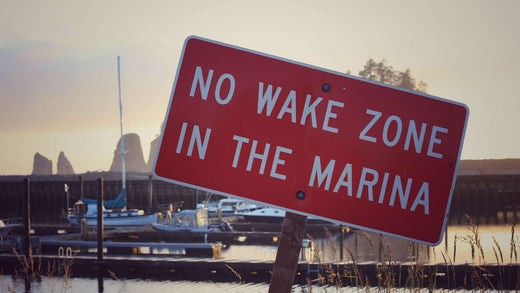
Understanding No Wake Speed: How Fast Can You Go?
Nicholas HeislerShare
Navigating no wake zones is a crucial part of responsible boating. These areas are designated to protect shorelines, docks, swimmers, and other vessels from the potentially harmful effects of boat wakes. But what exactly does "no wake speed" mean, and how fast can your boat go in these areas?
What Is No Wake Speed?
No wake speed is the slowest speed at which your boat can still maintain steering control. In practical terms, this means that your boat should produce little to no wake-the disturbance on the water surface caused by the boat's movement. Typically, no wake speed is considered to be between 3 to 5 miles per hour (mph), depending on your boat and water conditions.
Why No Wake Zones Are Important
No wake zones are established to prevent erosion of shorelines, protect aquatic life, and ensure the safety of swimmers and smaller vessels. When a boat travels faster than no wake speed, the wake it creates can cause significant damage. Here are some key reasons why adhering to no wake speed is vital:
- Shoreline Protection: Wakes can erode the shoreline, leading to property damage and loss of natural habitat.
- Safety: Swimmers, paddleboarders, and kayakers are at higher risk of injury in areas with high wakes.
- Dock and Vessel Damage: Wakes can cause boats tied to docks to bang against them, leading to damage.
How to Maintain No Wake Speed
Maintaining no wake speed requires careful control of your boat's throttle. Here's how you can do it:
- Throttle Control: Gradually reduce your throttle until your boat is just above idling speed. Ensure the boat remains in gear to maintain steering control.
- Awareness of Conditions: Wind, currents, and the size of your boat can all impact your ability to maintain no wake speed. Adjust as necessary to stay compliant.
- Monitor Your Surroundings: Keep an eye on your boat's wake and the distance from other boats, docks, and the shoreline to ensure you are not causing disruptions.
Penalties for Violating No Wake Zones
Boaters caught exceeding no wake speed in designated zones can face hefty fines, and in some cases, more severe penalties. It's not just about avoiding fines, though-violating these regulations can endanger lives and damage the environment.
Frequently Asked Questions
- Can I be fined for going over no wake speed? Yes, exceeding no wake speed can result in fines, and repeated offenses may lead to more severe penalties.
- How do I know if I'm in a no wake zone? No wake zones are typically marked by buoys, signs, or other indicators. They are common near marinas, docks, swimming areas, and environmentally sensitive regions.
- Is no wake speed the same for all boats? While no wake speed generally means the same for all boats, the exact speed may vary slightly based on the boat's size and type.
Respecting the No Wake Zone
Understanding and adhering to no wake speed is essential for safe and responsible boating. By maintaining the proper speed in designated zones, you help protect the environment, safeguard other water users, and avoid costly fines. Remember, no wake speed isn't just a guideline-it's a critical part of boating law and safety.
When it comes to keeping your boat clean, look to Captains Preferred Products boat brushes and boat cleaning supplies. Find everything you need to keep your vessel squeaky clean all season - always at the best prices.




